Building a CRUD Application with Qwik: A Comprehensive Tutorial
In this guide, you'll learn to craft a fully functional CRUD (create, read, update, delete) application using Qwik.
We’ll demonstrate essential operations for managing data while connecting your app to Back4app. Initially, you'll set up a Back4app project titled Basic-CRUD-App-Qwik to serve as the backend for data management.
Next, you'll configure a scalable database by defining collections and fields—either manually or with the assistance of the Back4app AI Agent. This ensures that your data model is optimized for handling CRUD tasks efficiently.
You'll then utilize the Back4app Admin App, a user-friendly drag-and-drop interface, to manage your collections seamlessly. This tool simplifies data operations by offering an intuitive way to create, update, and delete records.
Finally, you’ll integrate your Qwik frontend with Back4app using REST or GraphQL APIs, along with implementing robust security controls.
By the end of this tutorial, your production-ready application will not only handle CRUD operations but also support user authentication and secure data access.
- Master the art of developing CRUD applications that effectively handle data using a reliable backend.
- Discover methods to design an adaptable backend and merge it with a Qwik frontend for enhanced user interactivity.
- Explore the advantages of a drag-and-drop admin interface (Back4app Admin App) to streamline CRUD functions.
- Learn about deployment strategies, including Docker containerization, to swiftly launch your web application.
Before starting, please ensure you have:
- A Qwik development environment. Set up your project using the Qwik documentation. Ensure you have Node.js (version 14 or later) installed.
- A basic understanding of JavaScript, Qwik, and REST APIs. Consult the Qwik docs if you need a refresher.
- Sign in to your Back4app account.
- Click on “New App” in your dashboard.
- Input the project name: Basic-CRUD-App-Qwik and follow the instructions to create your project.
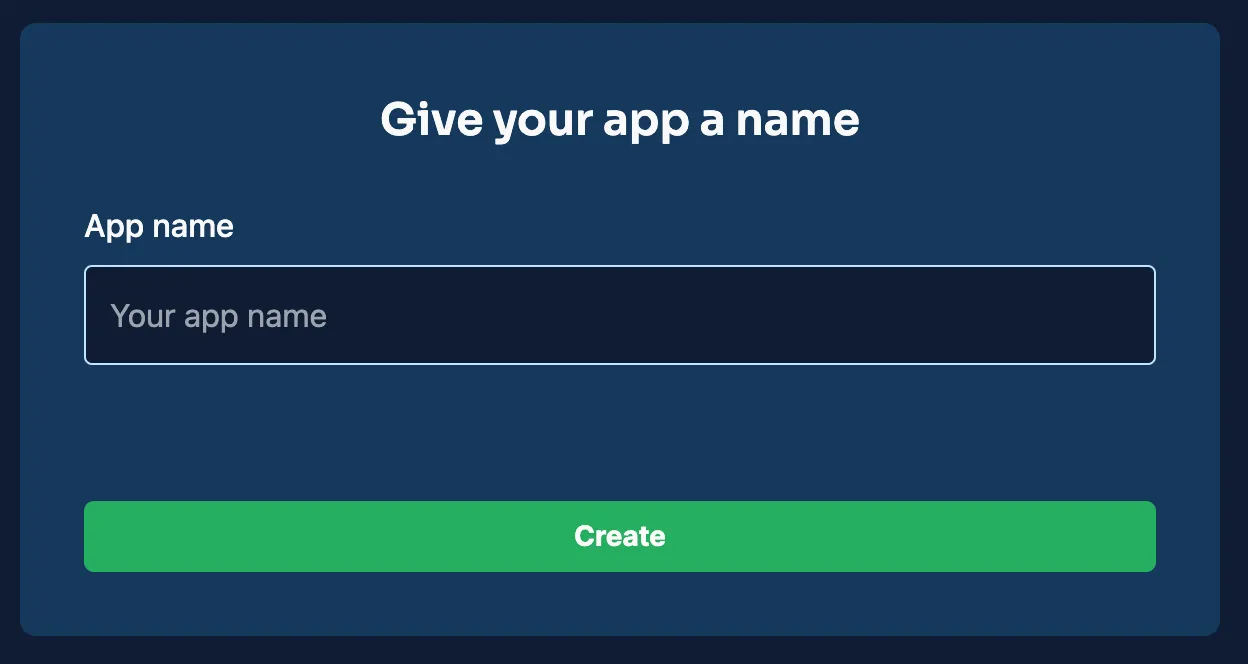
Your new project will then appear on your dashboard, forming the backend foundation for your application.
For this CRUD app, you’ll define several collections. Below are examples outlining the necessary fields and types to help you create an effective database schema for handling CRUD operations.
This collection holds details for each item.
Field | Data Type | Description |
|---|---|---|
_id | ObjectId | Auto-generated primary key. |
title | String | Name of the item. |
description | String | Brief details about the item. |
created_at | Date | Timestamp when the item was created. |
updated_at | Date | Timestamp of the last update. |
This collection stores user details and authentication info.
Field | Data Type | Description |
|---|---|---|
_id | ObjectId | Auto-generated primary key. |
username | String | Unique identifier for the user. |
String | User’s unique email address. | |
password_hash | String | Encrypted password for login. |
created_at | Date | Account creation timestamp. |
updated_at | Date | Last update timestamp for the user account. |
You can manually add these collections through the Back4app dashboard by creating new classes and configuring each column as needed.
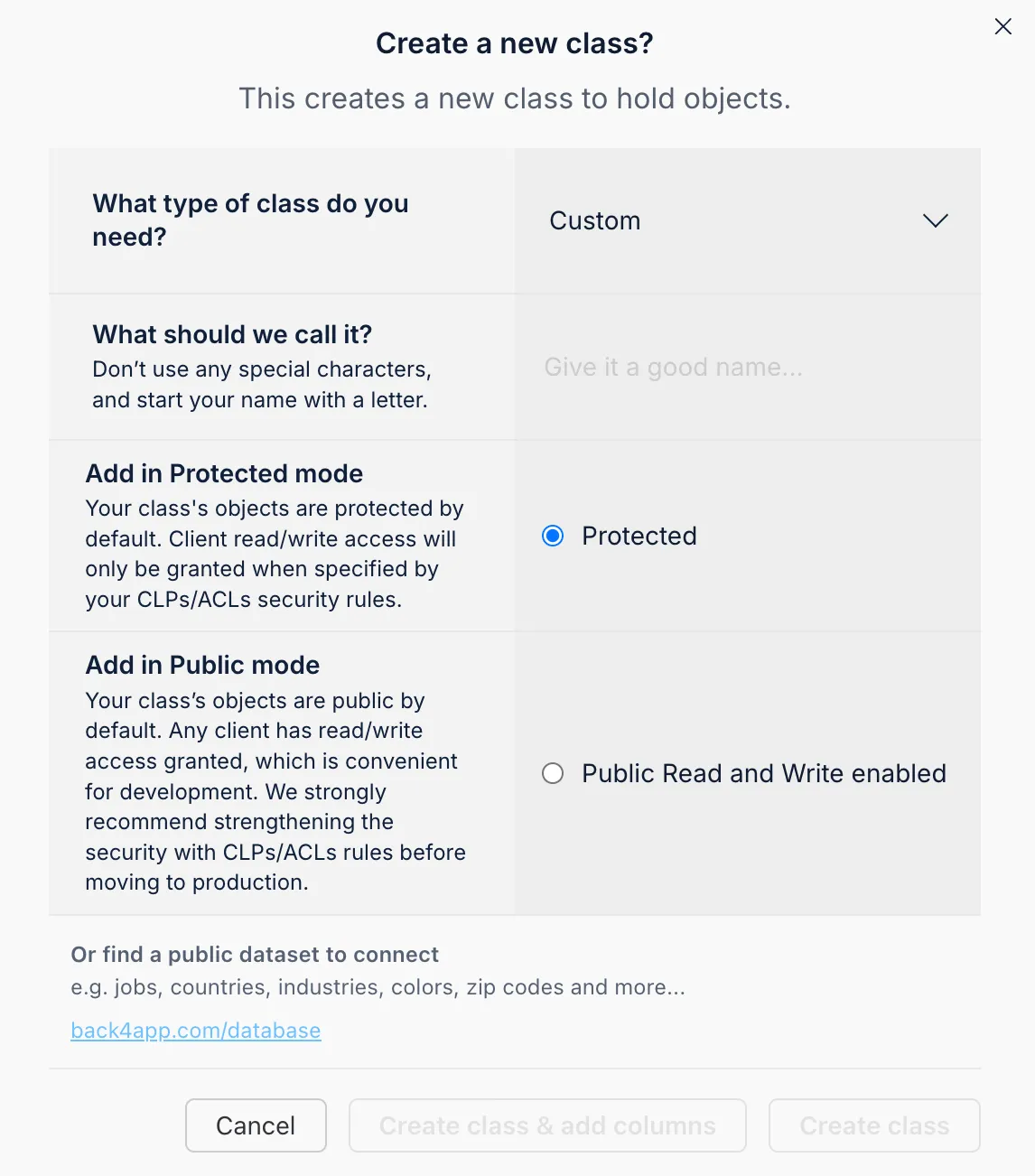
Easily add fields by selecting the type, providing a name, and configuring default values and constraints.
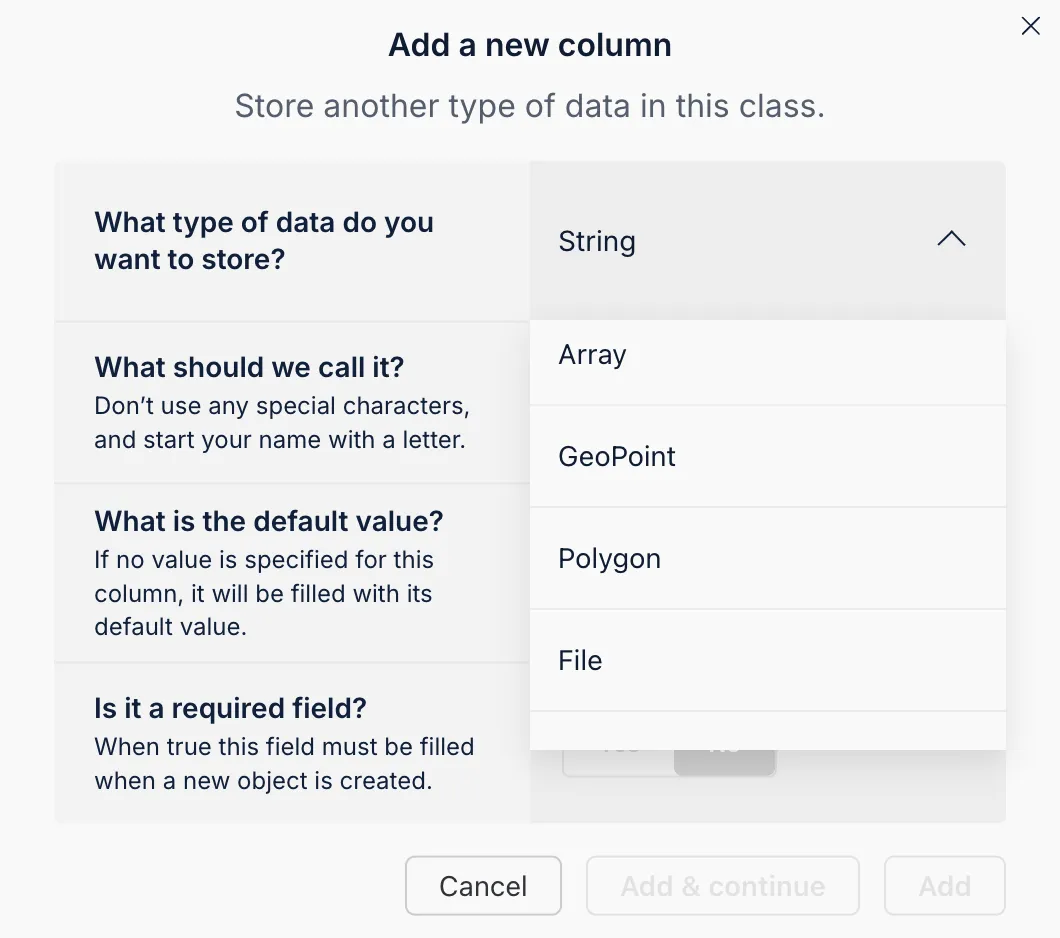
The Back4app AI Agent can automatically generate your schema based on a descriptive prompt. This feature accelerates project setup and ensures consistency.
- Access the AI Agent: Locate it in your Back4app dashboard or within your project settings.
- Detail Your Data Model: Provide a prompt that describes the collections and fields you require.
- Review and Implement: Evaluate the generated schema suggestions and apply them to your project.
This approach saves time and guarantees a well-structured schema tailored for your application.
The Back4app Admin App provides a no-code interface for managing backend data. Its intuitive drag-and-drop functionality lets you easily perform CRUD operations.
- Access the “More” menu from your Back4app dashboard.
- Select “Admin App” and then click “Enable Admin App.”
- Set up your admin credentials by creating an admin user, which will automatically establish roles and system collections.
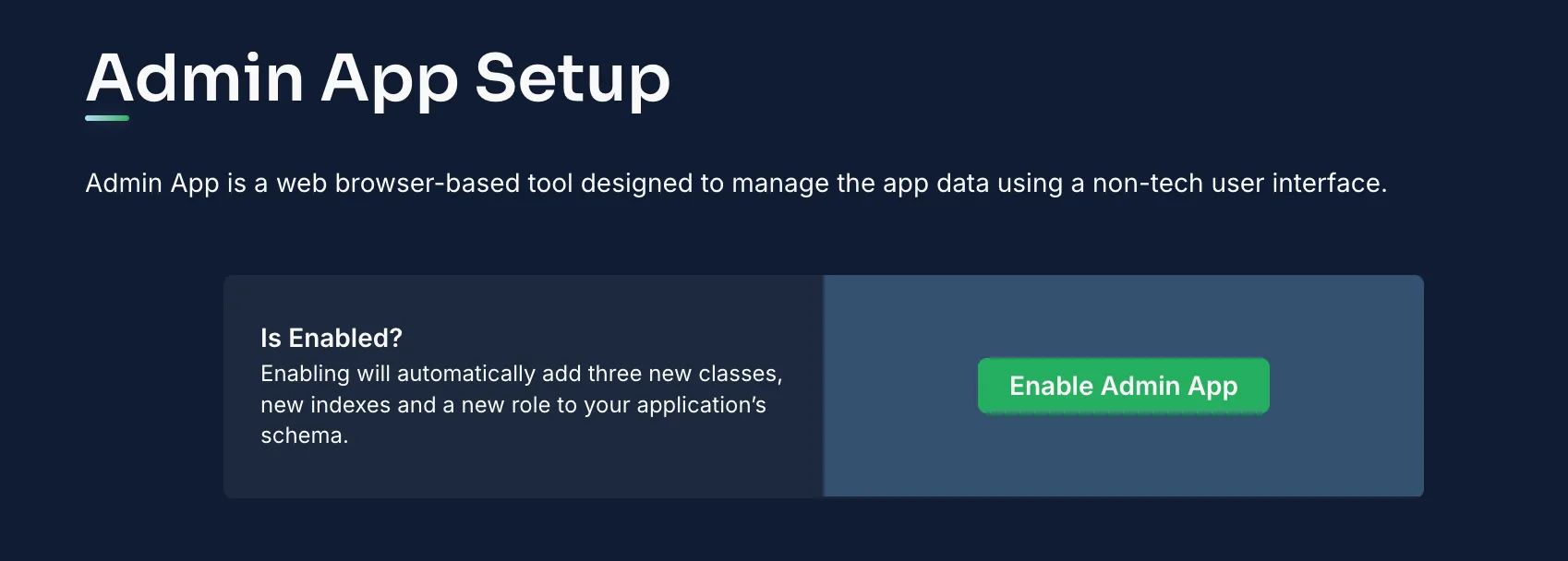
After activation, sign in to the Admin App to manage your data effortlessly.
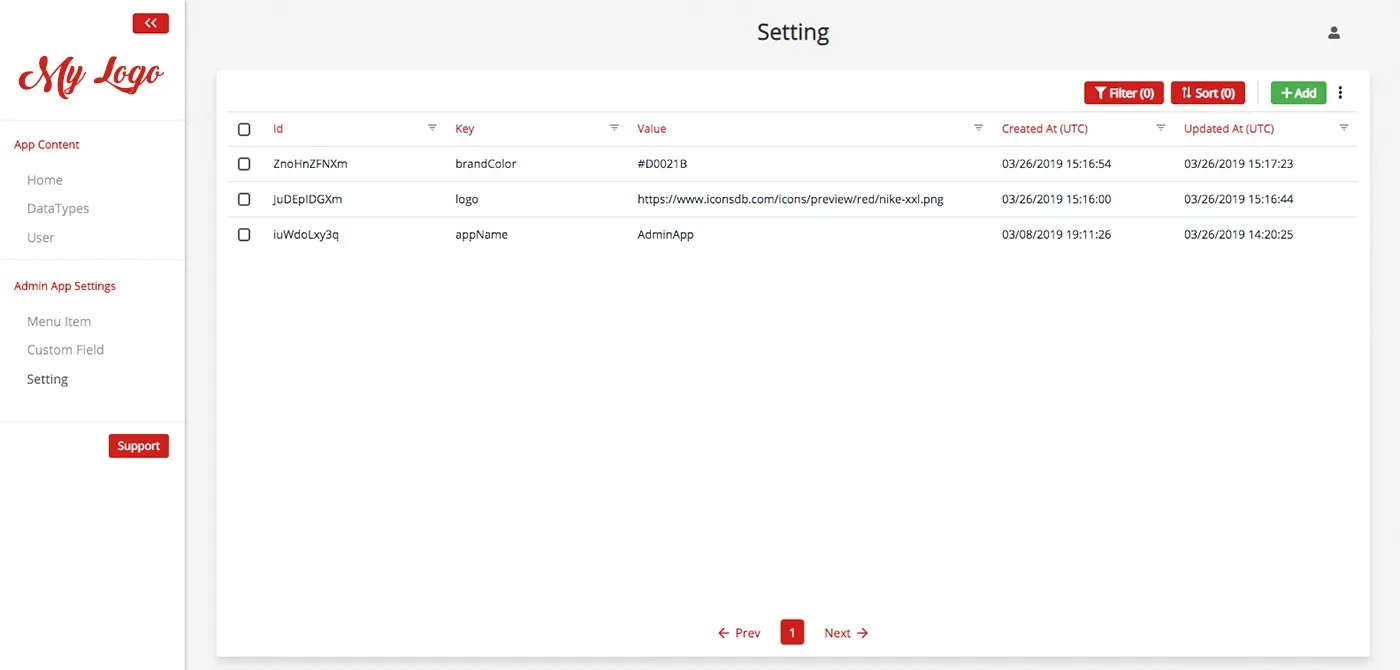
- Add Records: Use the “Add Record” button within any collection (e.g., Items) to create new entries.
- View/Edit Records: Click on any record to inspect its details or make updates.
- Remove Records: Utilize the delete function to eliminate obsolete entries.
This tool streamlines data operations, ensuring a smooth user experience.
Now that your backend is configured, it's time to integrate your Qwik frontend with Back4app.
We'll employ REST API calls to interact with Back4app.
Create a Qwik component (e.g., src/components/ItemsList.tsx) that retrieves and displays items:
This component uses the fetch API to call Back4app’s REST endpoint, retrieving the list of items.
For other CRUD operations (create, update, delete), integrate similar REST calls into your Qwik components.
Enhance your data security by setting ACLs on your objects. For instance, to restrict access to a specific item:
Within the Back4app dashboard, adjust CLPs for each collection to enforce default access policies, ensuring only authorized users can interact with sensitive data.
Back4app utilizes Parse’s User class for managing authentication. In your Qwik app, implement user sign-up and login as shown below.
A similar approach can be applied to login and session management. Additional options such as social authentication, email verification, and password recovery can be configured via Back4app.
Back4app’s Web Deployment service enables seamless hosting of your Qwik frontend by linking your GitHub repository. Follow these steps to deploy your site:
- Open your project folder in the terminal.
Run the build command:
- Confirm the Build: Ensure the build folder has an index.html file along with associated asset directories.
Your repository should include the full source for your Qwik frontend. A typical structure might be:
Initialize Git (if not already done):
Stage your files:
Commit your changes:
- Create a GitHub repository: For instance, name it Basic-CRUD-App-Qwik-Frontend.
Push your code to GitHub:
- Access Web Deployment: Log into your Back4app dashboard, select your project (Basic-CRUD-App-Qwik), and navigate to the Web Deployment section.
- Link to GitHub: Follow on-screen prompts to connect your GitHub account.
- Select the Repository and Branch: Choose your repository (e.g., Basic-CRUD-App-Qwik-Frontend) and the relevant branch (e.g., main).
Specify additional settings:
- Build Command: If a pre-built build folder isn’t included, set the command (e.g., npm run build).
- Output Directory: Define the output directory as build.
- Environment Variables: Insert any necessary variables like API keys.
If you opt for Docker, include a Dockerfile similar to:
Then, select the Docker option in your Web Deployment settings.
- Click the Deploy button: Once configuration is complete, hit Deploy.
- Watch the Build: Back4app will pull your code, build it, and deploy the container.
- Receive Your URL: After deployment, a URL will be provided where your app is hosted.
- Visit the URL: Open the provided link in your browser.
- Test the Functionality: Check that all routes and assets load correctly.
- Debug if Necessary: Use browser developer tools and Back4app logs to troubleshoot issues.
Well done! You have successfully built a full-fledged CRUD app using Qwik and Back4app.
You established the project Basic-CRUD-App-Qwik, crafted a detailed database schema for Items and Users, and managed data with the Admin App.
Moreover, you connected your Qwik frontend to the backend and applied strong security measures.
Next Steps:
- Expand Your Frontend: Enhance your Qwik app with features like detailed item views, search functionalities, or real-time updates.
- Add More Functionality: Consider integrating advanced backend logic, third-party APIs, or role-based access control.
- Explore Additional Resources: Refer to the Back4app documentation and further Qwik tutorials for in-depth knowledge on performance improvements and custom integrations.
By following this tutorial, you now possess the know-how to create
